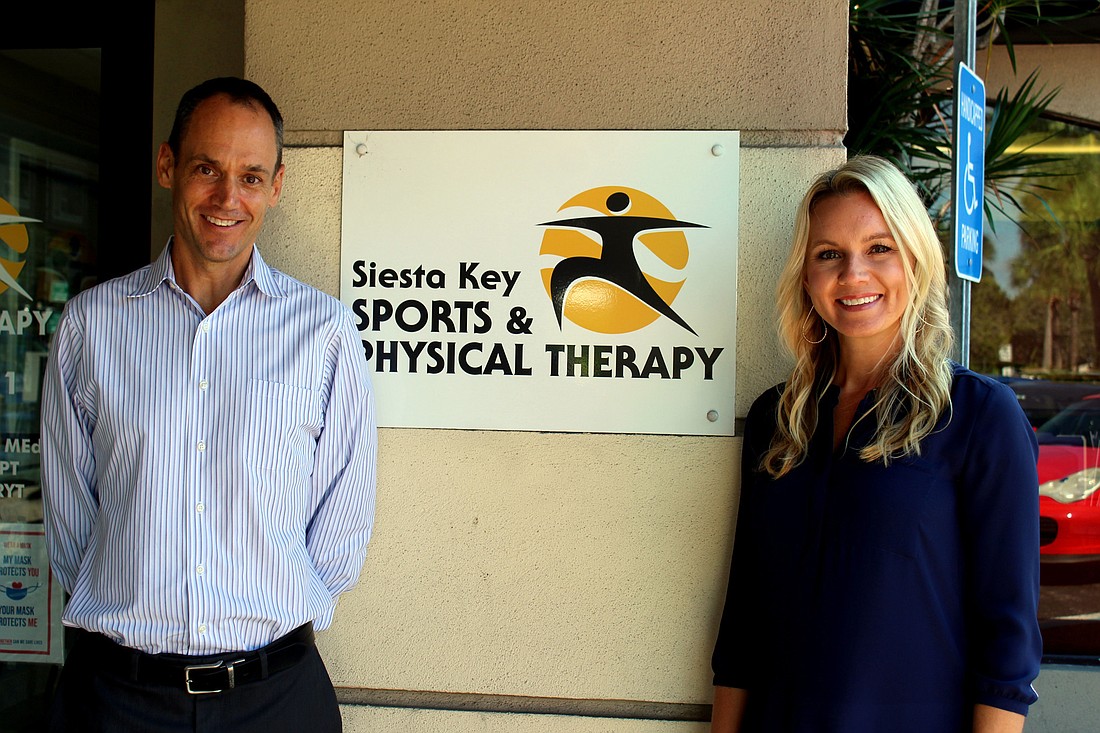- April 19, 2024
-
-
Loading

Loading

When most people think of physical therapy, they often picture it as a healing method after an accident or injury.
However, the truth is that physical therapy and a regular stretching routine can help people age more healthily.
As people age, they are more prone to injuries as a result of falls and frequently experience aches and pains due to improper use or prolonged periods of stress on the body.
According to the Centers for Disease Control and Prevention, one out of four adults — around 36 million — over the age of 65 will fall each year. Those falls result in about 3 million emergency room visits and 32,000 deaths annually.
Falls and other injuries are often caused by strength, balance and flexibility loss that people experience as they age.
However, physical therapists Dave and Kristy Ochsendoft, who have owned Siesta Key Sports & Physical Therapy for the past 10 years, say a few visits to the physical therapist and a regular at-home routine can help people live a healthier lifestyle without fear of falling.
“As we age, you can start to lose strength or balance, and for a lot of our seniors, that creates a fear of falling,” Dave Ochsendoft said. “That fear causes them to become less active, and in turn they get weaker, and then they’re more at risk for falling. It can become a downward spiral.”
The first step to a healthy routine is figuring out where potential weaknesses are. Common weaknesses among the older population include hips, legs and posture, the Ochsendofts said.
Although there are several exercises everyone can perform to keep strong, Kristy Ochsendoft said everyone has different weaknesses and strengths and should be evaluated to find a program that is challenging for them.
“For you to improve your balance or flexibility, you really want to challenge yourself with some of the exercises,” Kristy Ochsendoft said. “A person is going to benefit a lot more from an individualized program versus a general routine you find online. However, something is better than nothing.”
Treatment can last anywhere from a few sessions to more than eight weeks, depending on the injury and how well a person progresses. The goal, Dave Ochsendoft said, is to get a person to be self-sufficient in their treatment, so the onus to continue a regular routine falls with the patient.
“If you want to be independent, then it’s important to exercise daily,” Dave Ochsendoft said. “To maintain functional mobility in the community, you want to have a daily routine.”
Everyone’s body is different, and people will experience strengths and weaknesses in different parts of the body. Individualized routines will help a person see the most success, but there are a few general exercises everyone can try for healthy aging.
Stand up and sit down
It sounds simple, but a good way to keep strength in the legs and hips is standing up and sitting down on the edge of a chair without using your hands. Performing the seemingly simple task calls for flexibility, balance, muscle strength and motor coordination, and performing two sets of 10 repetitions a day can help keep you healthy.
Practice good posture
The ideal posture is standing erect with your body in a straight line. As a person hunches forward while looking at a computer or other devices, everything in the front of the body gets tight, and the back gets overstretched.
Consciously sitting up straight and taking breaks every 30 minutes to move around can help your posture and keep your balance systems high-functioning. However, if you feel tightness as a result of poor posture, try lying flat on your back on a foam roller or rolled towel with your hands raised above your head. It can be hard to straighten properly when standing, but lying down allows gravity to help settle everything back in place.
Stretch your hips
When people sit too long, there is abnormal stress on the hips and knees. Walking regularly can help ease the pain, but you also can lie flat on the edge of your bed and dangle one leg off the side to lengthen the muscles in the front of the hip.
Stretch your chest
Reading or looking at a device can cause stress on the neck and upper back. Find a doorway, and place your hands on either side of the frame. Gently push forward into the palms of your hand to open up your chest.